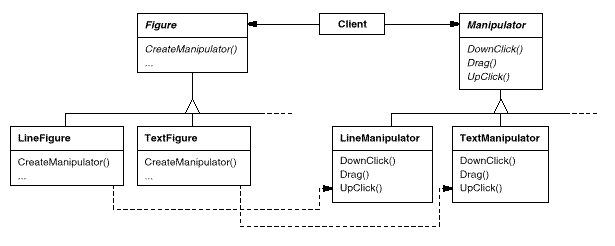Applied Design Patterns with Java
Creational :: Factory Method (107) {C ch 4}
Collaborations
- Creator relies on its subclasses to define the Factory Method
so that it returns an instance of the appropriate ConcreteProduct
Consequences
Factory Method eliminates the need to bind application-specific classes into code. The code only deals
with the Product interface; therefore it can work with any user-defined ConcreteProduct classes.
A potential disadvantage of Factory Method is that clients might have to subclass the Creator class to create
a particular ConcreteProduct object. Subclassing is fine when the client has to subclass the Creator class, otherwise
the client now must deal with another point of evolution.
Here are two more consequences of the Factory
Method pattern:
- Provides
hooks for subclasses. Creating objects inside a class
with a Factory Method is always more flexible than creating an object directly. Factory Method
gives subclasses a hook for providing an extended version
of an object. In the Document example, the Document class could define a Factory Method called CreateFileDialog
that creates a default file dialog object for opening an existing document. A Document subclass can define an application-specific
file dialog by overriding this Factory Method. Factory
Method is not abstract but provides a reasonable
default implementation.
- Connects
parallel class hierarchies. In the examples considered
so far, the Factory Method is only called by Creators. Clients can find factory methods useful, especially
in the case of parallel class hierarchies. Parallel class hierarchies result when a class delegates
some of its responsibilities to a separate class. With these constraints, it's better to use a separate Manipulator
object that implements the interaction and keeps track of any manipulation-specific state that's needed. Different
figures will use different Manipulator subclasses to handle particular interactions. The resulting Manipulator
class hierarchy parallels (at least partially) the Figure class hierarchy:

Catalog Creational Prev Next

